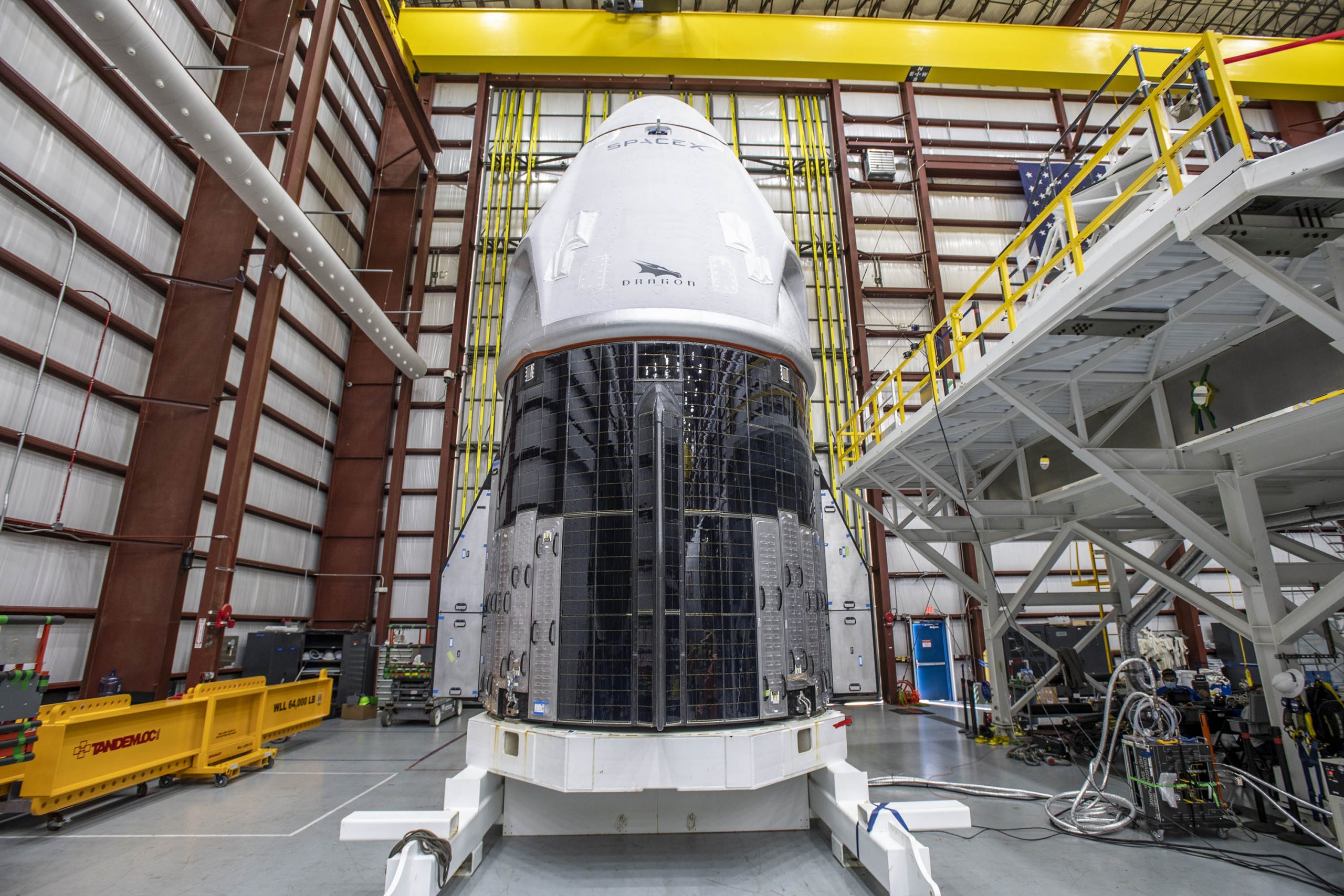The next astronauts to ride a SpaceX rocket arrive at Florida launch site
NASA's Crew-1 team is ready to fly.
A crew of four astronauts arrived at Kennedy Space Center in Florida Sunday (Nov. 8) in advance of SpaceX's second astronaut launch for NASA this week.
NASA astronauts Victor Glover, Michael Hopkins and Shannon Walker, along with Japanese astronaut, Soichi Noguchi, were all smiles as they stepped off a plane that was parked on the former space shuttle runway at the Kennedy Space Center in Florida.
Their mission, called Crew-1, will see a SpaceX Falcon 9 rocket launch a Crew Dragon spacecraft on an 8.5-hour trip to the International Space Station. Liftoff is set for Saturday (Nov. 14) at 7:49 p.m. EST (0049 GMT on Nov. 15) from Pad 39A at NASA's Kennedy Space Center in Cape Canaveral, Florida — if weather permits.
Live updates: SpaceX's Crew-1 astronaut launch for NASA

For NASA, this flight marks the highly-anticipated start of regular crew rotations at the International Space Station, with private companies ferrying the astronauts. On this flight there will be double the number of crew members as on the Demo-2 test flight earlier this year, and the mission will span six months.
"Today we flew here in a plane, but the plan is to leave on a rocket," Glover said, addressing a small crowd of onlookers. Unlike Hopkins, Walker, and Noguchi, this will be his first flight.
When asked how he felt about the upcoming launch, Glover said, "It's hard to put into words, it's surreal. I'm excited just to go to space. We have an amazing spacecraft and are going to join an amazing team."
Get the Space.com Newsletter
Breaking space news, the latest updates on rocket launches, skywatching events and more!
Glover, Hopkins, Walker and Noguchi will be joining three astronauts already on board the space station. NASA astronaut Kate Rubins, along with Russian cosmonauts Sergey Ryzhikov and Sergey Kud-Serchkov launched on a Russian Soyuz spacecraft on Oct. 21. The Crew-1 astronauts will join them on Nov. 15, if all goes according to plan.
The quartet of astronauts departed from Ellington Field near the Johnson Space Center in Houston on Sunday morning and flew to Kennedy on a charter plane. Upon arrival, they were greeted by NASA Administrator Jim Bridenstine, Deputy Administrator Jim Morhard, Center Director Bob Cabana, and manager of JAXA's International Space Station program, Junichi Sakai.
"I can't tell you how great it is to welcome a crew here to go to space again," Bob Cabana, Kennedy Space Center director said, greeting the crew.
This mission will be SpaceX's second crewed flight for NASA, following the successful Demo-2 flight that launched in May, and is part of NASA's Commercial Crew Program. This flight is the first operational mission for SpaceX's Crew Dragon, a commercial spacecraft designed to fly astronauts to and from low Earth orbit.
It will also mark the first time that an astronaut from one of NASA's international partners will board a SpaceX Crew Dragon. JAXA, the Japanese space agency, is sending one of its veteran astronauts on his third flight to the ISS. "It's such a nice feeling to be here," Noguchi said. "It's been such a long way, but Crew-1 is in town and we are the only game in town this week."
"Prime Crew at KSC, is the best part of astronaut life," he added.

Originally scheduled for Oct. 31, the mission was delayed two weeks to allow SpaceX to work out an engine issue that cropped up during a recent GPS mission. SpaceX determined that the anomaly was caused by some residual masking lacquer that is designed to protect sensitive engine parts during an anti-corrosion treatment.
SpaceX swapped out one of the engines on the Crew-1 booster, which is scheduled for a prelaunch static fire test on Tuesday (Nov. 10). The test was originally slated to take place on Monday (Nov. 9), but slipped 24-hours because of Tropical Storm Eta, which is expected to bring rain to the area this week.
The astronauts named their Dragon capsule "Resilience" in light of all the challenges of 2020. "It's been a tough year for everybody for a lot of different reasons," Hopkins said. "We felt like if the name of our vehicle could give a little hope, a little inspiration, put a smile on people's face, then that is definitely what we wanted to do."
That sentiment is also represented in the mission's patch. There are no names or flags on the patch. Instead it has symbols on the lower edge to pay tribute to the four prior U.S. spacecraft that carried astronauts ― Space Shuttle, Apollo, Gemini, and Mercury.
"Our mission is for everyone," said Noguchi. "All for one, one for all. Let's go fly."
Follow Amy Thompson on Twitter @astrogingersnap. Follow us on Twitter @Spacedotcom or Facebook.
Join our Space Forums to keep talking space on the latest missions, night sky and more! And if you have a news tip, correction or comment, let us know at: community@space.com.

Amy Thompson is a Florida-based space and science journalist, who joined Space.com as a contributing writer in 2015. She's passionate about all things space and is a huge science and science-fiction geek. Star Wars is her favorite fandom, with that sassy little droid, R2D2 being her favorite. She studied science at the University of Florida, earning a degree in microbiology. Her work has also been published in Newsweek, VICE, Smithsonian, and many more. Now she chases rockets, writing about launches, commercial space, space station science, and everything in between.








